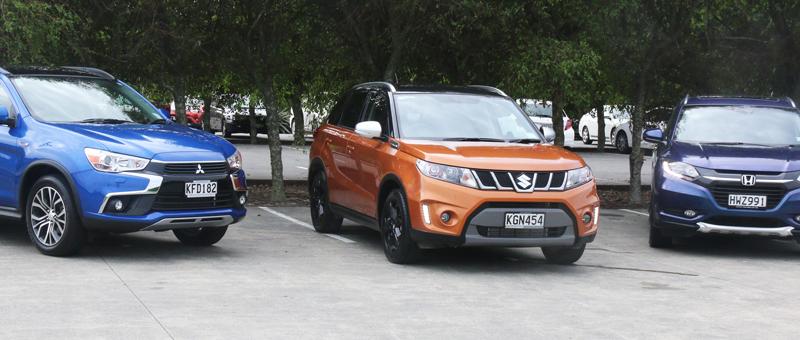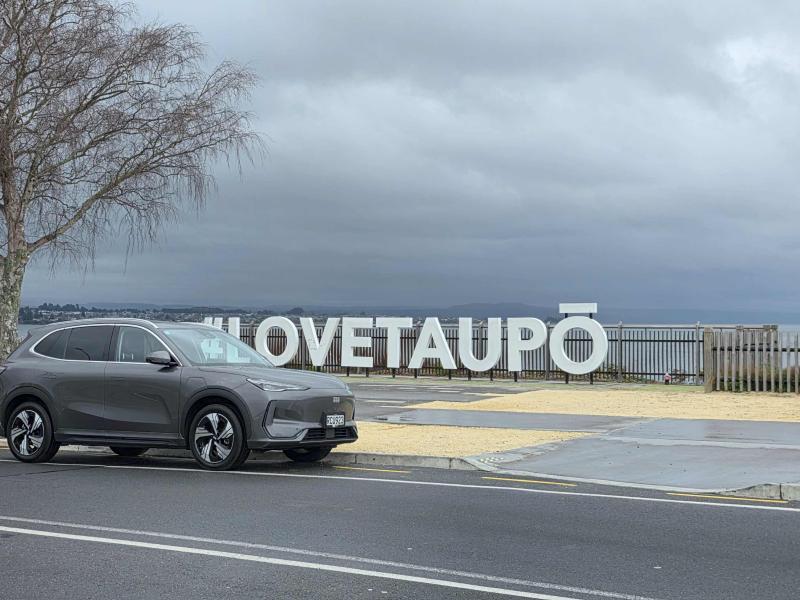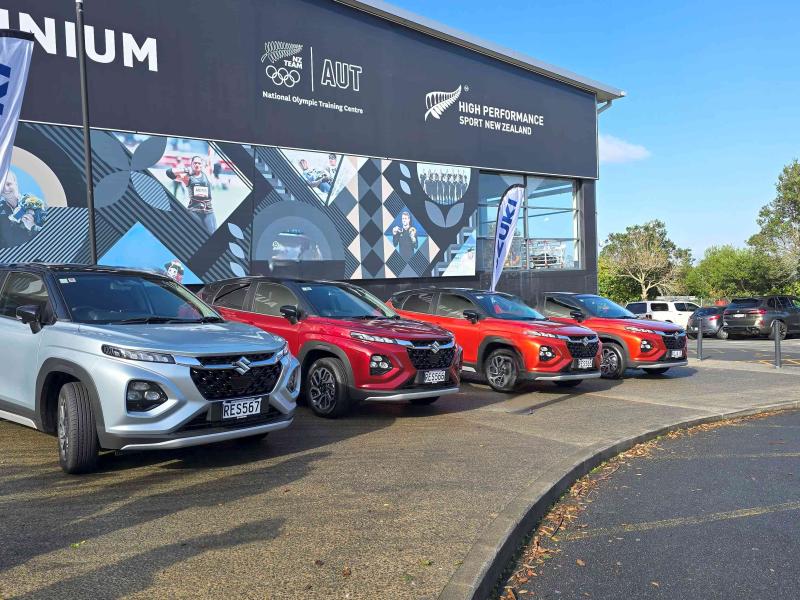It would come as no surprise to anyone to hear the phrase “SUVs are very popular these days”, because all we really need to do is look at local roads to understand that.
What may come as a surprise to some despite that, however, is just how unrelentingly popular they are. They are so popular that last year SUV's outsold all other passenger vehicles in New Zealand, the first time in history that has happened.
While that boom has largely come from the medium SUV segment – as buyers move away from traditional medium and large sedans and wagons – one segment that is really starting to fire up is the small SUV segment.
It wasn’t that long ago that the small SUV segment consisted of pretty much just the rugged and basic Suzuki Jimny – a serious off-roader with little in the way of comfort or convenience.
But that has changed drastically over the last few years, with pretty much every major manufacturer either spinning a small SUV off an existing small car platform or creating an all-new one in order to get into the exploding segment, which is currently one of the fastest growing segments on a global, and local, level.
Regardless of whether it has AWD and actual off-road ability or not, the small SUV has the unique ability to not just cover the role of the traditional city car urban runabout, but also take over the role of a car from the next segment up, thanks to its increased load carrying capabilities and practicality.
To that end we decided to take a look at three cars from the burgeoning segment – a couple of established players in the form of the popular Mitsubishi ASX and the Honda HR-V, and a newcomer from a name that arguably invented the segment in the first place – the Suzuki Vitara Turbo.
Mitsubishi ASX VRX 2WD
The Mitsubishi has long been something of the value for money leader in the segment, due to Mitsubishi’s sharp standard pricing, remarkably good regular discount offers and by packing impressive amount of equipment into the ASX as standard.
That last part is, however, due to the fact that the ASX is also one of the older contenders in the segment (having been around since 2007), so that is the best way to keep it competitive.
Either way though, the ASX does remain competitive in the segment, and the top-spec $40,500 2WD VRX we test here comes standard with an impressive amount of equipment, including 18-inch alloy wheels, a reversing camera and backing sensors, paddle gear shifters, a panoramic sunroof, keyless entry and start, electrically adjustable heated leather seats, automatic headlights and rain-sensing wipers.
Our testers appreciated the amount of equipment jammed into the ASX, but the seats did prove divisive, with testers praising the electric adjustment, but not all of them found the rather upright driving position to their liking. However, there was a general consensus that, in typical Mitsubishi fashion, they were too flat to be truly comfortable.
The Mitsubishi ASX is unique in the “small” SUV segment by actually sharing a platform with a medium SUV, namely Mitsubishi’s larger Outlander.
While the two share a wheelbase (2670mm), the ASX has considerably shorter overhangs and overall length, fitting it nicely into the small segment, albeit at the larger end of it.
This fact didn’t really help it out as much as you would expect, however, with testers all commenting that rear leg room and boot space was adequate without being spectacular (that particular accolade goes to the Honda) and that the panoramic sunroof robbed far too much of the rear head room for adults.
Out on the road, the ASX’s 112kW/200Nm 2.0-litre four-cylinder petrol engine attracted praise from some of the testers impressed by its top end power and cruising ability, but the continuously variable transmission attracted the usual complaints of reducing the engine to noisy and thrashy up higher in the revs, which is every time you plant the throttle. All testers did find the combination more than acceptable around town, however, where the ASX was smooth and relatively refined.
Handling and ride proved to be a mixed bag, with the ASX’s ride quality attracting praise from all testers, with one particularly liking the Mitsubishi’s “big car feel” on the open road, but the intrusive tyre noise prompted a couple of complaints.
The ASX’s steering was generally viewed as its weakest point, with words like “lifeless”, “wooden” and “dull” being used to describe it, although its safe, confident, sensibly understeer-biased handling was generally admired, without anyone actually getting too excited by it.
Is “better than I expected it to be” considered praise? Well, if it is, then the Mitsubishi ASX came in for quite a bit of praise, as it was considered by most testers to be the surprise of the line-up, simply by not being as average as they expected.
This still leaves the ASX as a competent, pleasant, well-equipped small SUV that, despite its advancing age (which is starting to get obvious when lined up alongside its competitors) offers a convincing package and an extremely good value for money proposition.
Honda HR-V Sport X
The HR-V is Honda’s recent entrant into the small SUV segment after it helped invent (along with Toyota) the car platform-based “softroader” concept back in the mid-1990s with the Civic-based CR-V.
The smaller HR-V is based on the Jazz platform and with that comes all the extreme versatility and space that Honda’s little car is renowned for.
The $41,200 HR-V Sport X we threw up against the others here comes standard with 17-inch alloy wheels, autonomous emergency city braking, keyless entry and start, dual zone climate control, leather upholstery, rear privacy glass, a reversing camera (and Honda’s brilliant indicator-activated left lane camera), rain sensing wipers, automatic LED headlights, LED daytime running lights and taillights and a panoramic sunroof.
The HR-V proved to be both a highlight of the selection and possibly the biggest disappointment all at the same time.
Testers unanimously loved the Honda’s high quality interior, commending it on its fit and finish, high-quality soft touch materials, ergonomics and comfort. The seats were also widely praised, although one tester found there wasn’t enough under-thigh support for their liking.
Up the back the HR-V boasts easily the best leg room of the bunch, with all testers admitting it being surprised and deeply impressed by the Honda’s huge amounts of rear leg room, however, like the Mitsubishi, head room was restricted by the panoramic sunroof, although nowhere near as badly.
Throw in the fact that the HR-V also had an impressive and usable boot and Honda’s deeply clever “Magic seats” in the rear and you have a load space that is easily the most flexible and useful of all the cars we tested.
All testers agreed that the HR-V had by far and away the best interior – both in terms of quality and ergonomics – out of all the cars tested, as well as the best handling and steering.
The little Honda’s ride was a more divisive, however, with some tester’s liking its firmer approach to the road, while others felt it to be a bit jiggly and overly firm for the segment.
While the HR-V’s appearance, quality and handling were generally universally admired, all testers agreed that its engine and transmission was a let-down.
The 2WD HR-V is powered by Honda’s 105kW/172Nm 1.8-litre four-cylinder petrol engine hooked up to a continuously variable transmission. While, on paper, that gives the HR-V the second most power in our line up (beaten only by the Mitsubishi), its torque figure was by far the most meagre of the lot – and that hurts the Honda.
All testers lamented the lack of power down low, and in the mid-range, while the absence of any meaningful torque anywhere just meant that the poor little 1.8 just revved like crazy and made a lot of noise without any instant increase in velocity.
The thing about continuously variable transmissions is that they can work well when there is a lot of torque to use, but that simply isn’t the case in the HR-V, meaning that it spent far too much time up high in the revs being buzzy.
While the HR-V is a deeply impressive small SUV in terms of quality, ride and handling and packaging, its poor powertrain lets it down, which is a shame.
Suzuki Vitara Turbo
Suzuki have long presented themselves as masters of the small SUV segment, even before there really was a segment. So it should come as no surprise that big things were expected of the Vitara Turbo.
When the latest Vitara was released, it was generally considered a good car in need of a better engine, and that is exactly where the Vitara Turbo comes in.
The Turbo comes, as the name may suggest, with Suzuki’s new “BoosterJet” 103kW/220Nm 1.5-litre four-cylinder petrol turbo engine hooked up to a conventional six-speed automatic transmission, making it the only car here without a CVT.
The $37,990 Vitara Turbo comes standard with 17-inch alloy wheels, suede and leather sports seats, privacy glass, a reversing camera, rain-sensing wipers, LED headlights and daytime running lights, keyless entry and start, climate control air conditioning and the Suzuki’s biggest advantage over the rest – Suzuki’s ALLGRIP 4WD system.
Being both the cheapest and the only one with AWD instantly gave the Vitara Turbo a big head start on the competition with out testers, although its interior instantly divided them.
The Suzuki’s interior featured the most visible hard plastics of the lot, with one judge describing its mix of various fabrics, plastics and textures as a “real dog’s breakfast”. While the interior was nicely laid out and ergonomically sensible, the seats came under fire from most testers for being far too narrow, particularly between the hard bolsters on the seat cushion – none of the testers are particularly huge, but all complained to some degree about the bolsters jamming uncomfortably into their thighs.
The Suzuki’s ride attracted praise from two of the testers who liked its bump absorption and compliance, while the third thought it was “average”.
The Vitara Turbo’s handling also split the testers, with one loving it, while the other two considered it capable and pleasant, but with an oddly easily unsettled front end. It was, however, considered easily the best on the short gravel section of our test route, which given it was the only AWD car there is not exactly a surprise.
One area where the judges were unanimous with the praise was for the brilliant little 1.4-litre turbo engine. Although having the least power of all the cars tested, the Suzuki also weighs the least and has by far the most torque (220Nm versus the Mitsubishi’s 200Nm and the Honda’s 172Nm).
This makes it easily the most responsive and flexible engine here, and when combined with the slick, swift six-speed auto, makes the Vitara Turbo the most satisfying car to drive by a long shot, both in town and out on the open road.
While all of the cars tested here came with touchscreen infotainment systems (all of which were rated similarly by all testers), the Suzuki was the only one top feature Apple CarPlay (although no Android Auto), which seems strange by today’s standards.
Summary
While it did split the testers (with two loving it and one not so convinced), the Suzuki Vitara Turbo’s great little engine and transmission, practicality, features and bargain price gave it the edge in this comparison.
Add in the fact that, despite being the cheapest, it was also the only one with AWD and the Suzuki’s victory becomes even more convincing.
Second place, however, is not quite so easy.
While the Honda easily had the best interior, handling and that incredibly flexible load space, the engine and transmission combination let it down. If you can put up with the buzzy, underpowered engine then the Honda is a thoroughly fantastic package. If not, then best to turn towards Mitsubishi.
While it didn’t make anyone rave with excitement, the Mitsubishi offered up a solid, competent and incredibly well-equipped package in the ASX and for that reason we have to rate the Mitsubishi ASX higher than the Honda, despite the deeply impressive nature of the Honda’s package.






